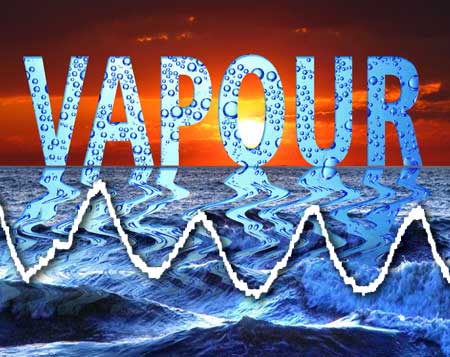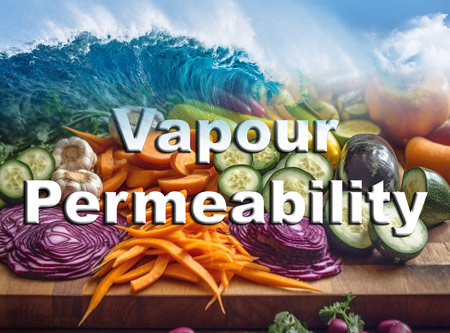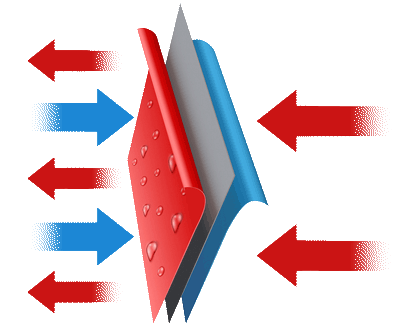

 Measuring vapour permeability in the printing industry is important for several reasons, particularly when it comes to substrate performance, print quality, durability, and product functionality. Here’s a breakdown of the key reasons why it’s necessary:
Measuring vapour permeability in the printing industry is important for several reasons, particularly when it comes to substrate performance, print quality, durability, and product functionality. Here’s a breakdown of the key reasons why it’s necessary:
1. Substrate Selection and Performance
Many printed materials—such as packaging films, labels, and specialty papers—need to allow or block moisture transmission depending on the application. Measuring vapour permeability helps determine how suitable a substrate is.
2. Ink Performance and Drying
Ink and coating systems interact with the substrate. Vapour permeability affects:
3. Packaging Requirements
In flexible packaging (a key area of printing), vapour permeability is often critical:
4. Sustainability and Material Innovation
With the rise of biodegradable and recyclable materials, understanding vapour permeability is more important than ever:
5. Regulatory Compliance and Standards
Some sectors require strict control of water vapour transmission (WVTR):
 Guide to typical water vapour transmission rates
Guide to typical water vapour transmission ratesBelow is arough guide to typical water vapour transmission rates (WVTR) for key printing substrates and paper coatings, expressed in grams per square meter per day (g/m²/day) at standard test conditions (usually 38°C, 90% RH, ASTM F1249 or similar). Values can vary based on thickness, coating, and manufacturing method, but these are useful ballpark figures:
Uncoated Papers
Material |
WVTR (approx.) |
Newsprint |
500–1000 g/m²/day |
Uncoated wood-free paper |
300–700 g/m²/day |
Kraft paper (uncoated) |
200–500 g/m²/day |
Coated Papers
Material |
WVTR (approx.) |
Clay-coated (gloss/matte) paper |
100–300 g/m²/day |
Polyethylene (PE) coated paper |
0.5–5 g/m²/day |
Wax-coated paper |
2–10 g/m²/day |
Aluminum foil-laminated paper |
<0.05 g/m²/day |
 Flexible Packaging Films (common in printed packaging)
Flexible Packaging Films (common in printed packaging)
Film Type |
WVTR (38°C, 90% RH) |
Polyethylene (LDPE) |
0.5–2 g/m²/day |
Polypropylene (OPP) |
0.2–1 g/m²/day |
PET (Polyester) |
1–3 g/m²/day |
Nylon (PA) |
5–10 g/m²/day |
EVOH (high-barrier) |
<0.1 g/m²/day |
Cellophane (uncoated) |
10–30 g/m²/day |
Cellophane (PVdC-coated) |
1–5 g/m²/day |
Biodegradable & Sustainable Materials
Material |
WVTR (approx.) |
PLA film (Polylactic Acid) |
30–60 g/m²/day |
Paper with bio-coating |
50–200 g/m²/day |
Compostable cellulose film |
20–40 g/m²/day |
Notes on Testing:
Understanding the advantages and disadvantages of different vapour permeability levels is crucial for matching materials to printing applications. Here’s a clear breakdown for high, medium, and low vapour permeability across important use cases in the printing industry:
Vapour Permeability Levels
 1. Food Packaging
1. Food Packaging
Low Vapour Permeability (Preferred)
🔴 High Vapour Permeability
2. Coated Paper (Magazines, Labels, Brochures)
🟡 Medium Vapour Permeability (Ideal)
 3. Cardboard (e.g., Shipping Boxes, Retail Displays)
3. Cardboard (e.g., Shipping Boxes, Retail Displays)
🟢 Medium to High Vapour Permeability (Often Acceptable)
🟠 Low Permeability (when coated)
4. Printing onto Fabrics (Textiles, Apparel)
🔵 High Vapour Permeability (Preferred)
Sustainability Considerations
Permeability |
Environmental Impact |
Low (e.g., multilayer films) |
Often difficult to recycle; needs special treatment |
Medium (e.g., bio-coated paper) |
Good balance of function and recyclability |
High (e.g., uncoated paper, cellulose film) |
Biodegradable but poor barrier — short shelf life |
Summary Table
Application |
Preferred WVTR |
Why? |
Food Packaging |
Low |
Barrier to moisture; preserves freshness |
Coated Paper |
Medium |
Ink control, stability, print quality |
Cardboard |
Medium–High |
Breathability vs. barrier, depends on contents |
Fabrics |
High |
Breathability and comfort |
Vapour permeability plays a critical but often overlooked role in the printing industry. Its importance varies across different types of printing, depending on the materials used, the end-use of the product, and the environmental conditions to which the printed materials will be exposed.
 Guide to printing processes and vapour permeability
Guide to printing processes and vapour permeability1. Lithographic (Litho) Printing
Uses of Vapour Permeability:
Problems:
2. Newsprint / Coldset Web Offset
Uses of Vapour Permeability:
Problems:
 3. Fabric / Textile Printing
3. Fabric / Textile Printing
Uses of Vapour Permeability:
Problems:
4. Flexographic Printing
Uses of Vapour Permeability:
Problems:
5. Gravure Printing
Uses of Vapour Permeability:
Problems:
6. Screen Printing
Uses of Vapour Permeability:
Problems:
Summary
Across all forms of printing, vapour permeability is critical in balancing ink performance, substrate behaviour, drying time, and end-use requirements. Misjudging it can lead to aesthetic flaws, functional failures, or even legal compliance issues (e.g. in food or medical packaging). This makes the ability to measure and control vapour permeability not just a technical detail, but a vital component of reliable, high-quality print production.